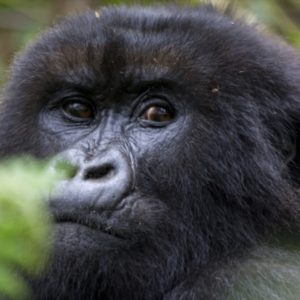Video courtesy of Seychelles Tourism Board
East Africa offers an amazing range of activities in addition to a Wildlife Safari or Gorilla & Monkey Trekking – from walking, biking, camel or horse riding safaris to snorkeling and diving in the Indian Ocean, climbing Mount Kenya or Kilimanjaro, white water rafting, fishing or playing golf in beautiful locations.
Sitting astride the equator, Kenya enjoys a good year-round climate and has a sophisticated infrastructure with a variety of excellent accommodation options in hotels, lodges, luxury camps, tree hotels and even private luxury mobile camps in prime wildlife locations.
Kenya is also host to the annual wildebeest migration which only happens in East Africa. One of nature’s most impressive displays of wildlife, the migration can be seen in the Mara-Serengeti where it is estimated that over two million animals migrate in a year-round pattern, following the rain and greener pastures.
Tanzania’s close proximity to the equator provides an idyllic climate making it a year-round holiday destination whether you are looking for a beach escape, a once in a lifetime safari or a thrill-seeking climb to the summit of Mt Kilimanjaro. If you are short on time, then a visit to one or two of Tanzania’s northern parks of Tarangire, Lake Manyara, Ngorongoro or the Serengeti are a must.
The world-famous Academy Award nominated film ‘Gorilla’s in the Mist’ based on the wildlife expert Dian Fossey, was filmed in these mountainous jungles.
A lucky few may experience the thrill of living on their own private island. but for everyone else the islands of Mahe, Praslin and La Digue offer the chance to escape the real world and get back to nature.
Zanzibar is also known as the ‘Spice Island’ due to the delicious variety of spices grown on the island’s many plantations. Stone Town, a World Heritage Site, boasts a labyrinth of winding alleys, bustling marketplaces, beautifully carved wooden doors, breathtaking mosques and grand Arab residences.
Another must-see attraction on Zanzibar includes the Jozani Forest Reserve – home to the rare Kirk’s red colobus monkey and Aders’ duiker. Off the north-eastern coast of Zanzibar is Mnemba Island – an idyllic private island featuring luxurious accommodation, breathtaking scenery and rich marine diversity.
Tanzania – is also year-round destination, June to September, the cooler dry season when animals are easier to spot around the water sources. The temperature rises from October, light rains come in November, December, January and February the game have given birth to their young, and March – May the heavier rains set in.
Uganda & Rwanda – Late December to early March is the dry season and gorilla treks are easier with the views enhanced. Although the dry months are good for gorilla trekking and birding, you might see more during the wet months since this is when breeding occurs.
East African Islands – There are many gorgeous islands to visit like the Seychelles, Zanzibar or Mauritius. With an average temperature of 27°C it rarely gets too hot to enjoy an ideal beach climate. Naturally, like any tropical island it does rain, but showers are usually brief, lasting just a couple of hours, and are often stationed to one island or even just one area of an island. The driest months are May and September, the wettest weather occurs in November, December and January – but during these months there is plenty of sunshine before and after the showers.
The Wildebeest Migration in Tanzania – in December through March the Serengeti plains and the Ngorongoro Conservation areas in northern Tanzania are home to giant herds of wildebeest, zebra and other ungulates. This is calving season. Most of the wildebeest calves are born in just a three-week period, usually the beginning of February. Calves attract predators and this is an amazing time of year to watch impressive lion kills. It’s also quite spectacular to see almost half a million-little wildebeest being born and running alongside their mothers. The southern Serengeti is the best area to see the large herds during this time of year. The best places to stay include any mobile tented camps in the area.
Another option is ‘Serengeti Under Canvas’ a Mobile Tent Camp which has been carefully planned to bring guests as close as possible to the magnificent natural spectacle of the Great Migration, the two Serengeti Under Canvas camps are situated at a variety of private campsites throughout the national park and move according to the path of the migratory herds. A comfortable drive brings guests into the midst of moving masses of wildebeest and zebra, ready to witness the natural drama as herds brave obstacles and predators to reach rich grasslands.
Showing all 2 results


